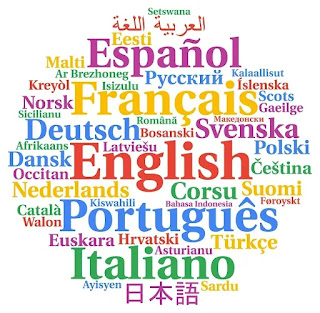Most Complete Languages on Earth Today
Language is not just a way to speak it is how civilizations think, feel, create, and preserve knowledge. A “complete” language is one that can handle the complexity of science, the delicacy of poetry, the structure of legal thought, and the precision of daily communication. Based on deep linguistic analysis and comparisons, here are some of the most complete languages in the world today:
English
-
Why it's complete:English is the global language of communication. It has the largest vocabulary estimated at over 1 million words due to its history of absorbing words from Latin, French, Germanic, and many other languages.It is dominant in science, technology, business, diplomacy, media, and internet communication.Its grammar is relatively simple, and its sentence structure is flexible, making it useful in both casual and highly professional contexts.It also has a massive literary and academic heritage.
Arabic
-
Why it's complete:Arabic is one of the richest languages vocabulary-wise, especially in its classical form. It has precise grammar rules and deep expressions of emotion, spirituality, and logic.Classical Arabic (Fus’ha) is used in the Quran, historical texts, philosophy, and religious scholarship, while Modern Standard Arabic is used in media, literature, and education across the Arab world.Its ability to form words from root letters gives it a unique depth and flexibility.
Urdu
-
Why it's complete:Urdu is a highly poetic and expressive language that borrows its vocabulary from Arabic, Persian, Turkish, and Sanskrit, giving it cultural and linguistic depth.It has a refined grammatical system and is especially strong in expressing emotions, courtesy, and aesthetics.Urdu has played a major role in South Asian literature, especially poetry (ghazal, nazm), and also serves well in journalism, politics, law, and modern education.Its script (Nastaʿlīq) is artistically rich and unique in calligraphy.
French
-
Why it's complete:French is spoken in over 29 countries and remains a key language in international diplomacy, law, philosophy, and literature.It is known for its precise grammar, elegant expressions, and structured logic.French vocabulary is widely used in culinary arts, fashion, architecture, and formal academic writing.The language is also deeply embedded in historical and modern intellectual movements.
Mandarin Chinese
-
Why it's complete:Mandarin Chinese is the most spoken native language in the world.Its writing system, though complex, holds deep cultural and historical meaning.The language is structurally efficient and suited for both modern technology and ancient philosophy.It has been a tool of communication, governance, and scholarship for thousands of years.Despite having fewer sounds, its tonal nature and character-based writing make it highly expressive.
Russian
-
Why it's complete:Russian is a language of science, especially known for its contributions in mathematics, physics, and space exploration.It has a rich literary tradition and strong grammatical structure, with detailed cases and verb aspects.Russian is also a geopolitical language, spoken across many countries of the former Soviet Union and beyond.Its structure allows for precise and complex expression, particularly useful in political, military, and academic writing.
German
-
Why it's complete:German is a major language of engineering, science, and philosophy.Its compound words allow the creation of very precise terms.It has an orderly grammar and is known for producing deep academic and legal texts.German is also influential in music, psychology, and classical literature.

